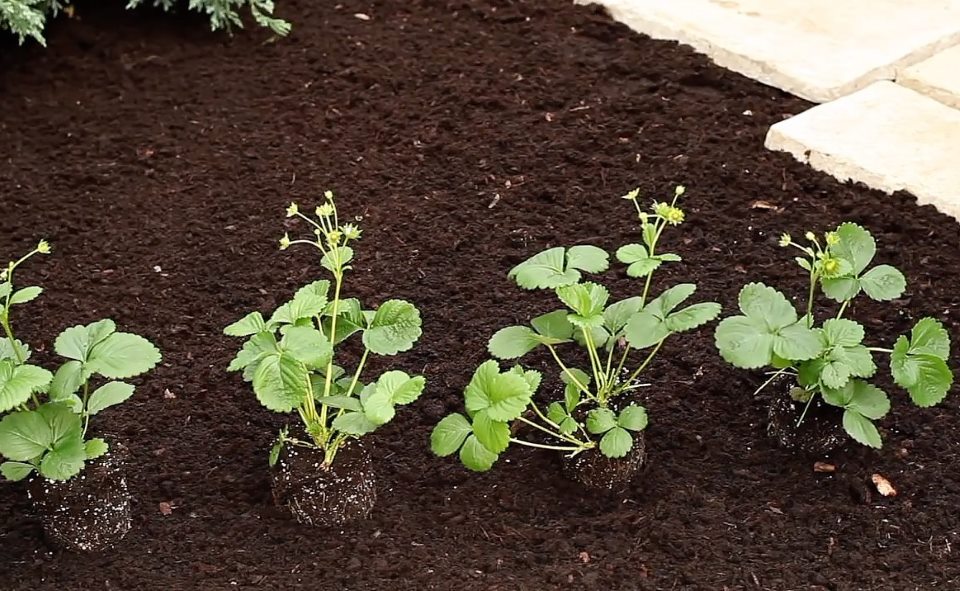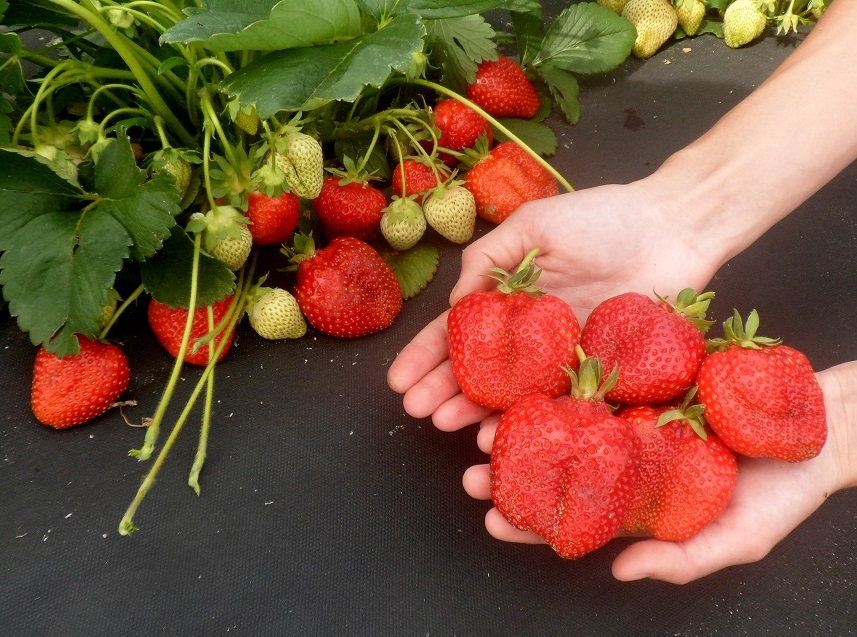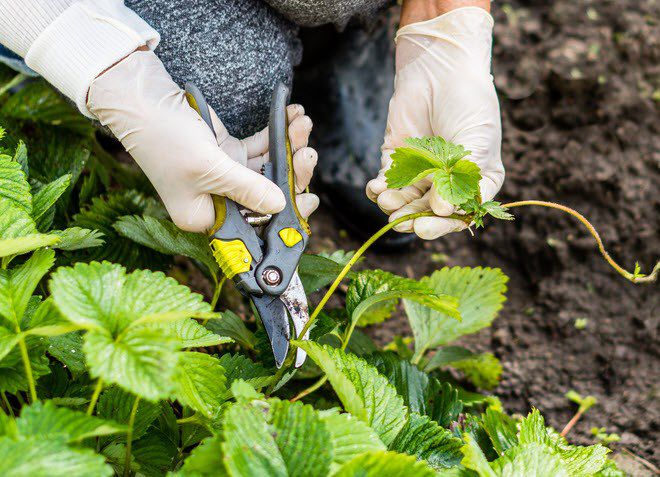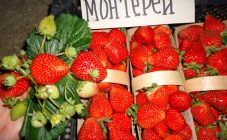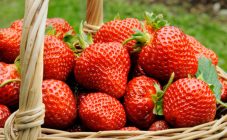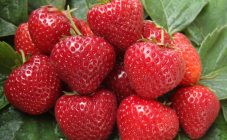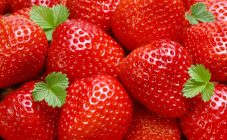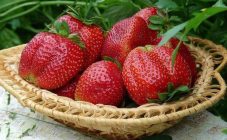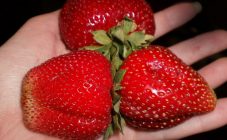Content:
Those who love strawberries, especially those with large berries, should definitely pay attention to the Eliane variety. These are delicious massive berries, the cultivation of which can be handled by almost every gardener, even a beginner.
A bit of history
Eliane's strawberry was bred by Dutch breeders in 1998. The originator was Albert Konnings. The original purpose of this variety of berries is to grow on private plots in Holland in a continental climate.
Features of culture
Eliane is a varietal strawberry that is one of the first to give berries to its owners, but at the same time it is almost the last to finish bearing fruit. The variety is self-pollinated, gives large fragrant berries, weighing from 20 to 90 grams. The shape of the fruit is regular, conical, shiny, the flesh is very dense, juicy with a sweet taste.
With proper care, each bush can give up to 2 kg. Another feature of this variety is considered to be good preservation characteristics. You can store crops in the refrigerator for several weeks. It is very easy to transport them, so many grow them for sale.
The bushes grow beautifully and have an attractive, healthy appearance. The leaves are very large and regular in shape, typical of strawberries. It is easy to care for Elina's berry variety. The plant is not demanding on the soil, however, it is necessary to carry out a minimum of mandatory agricultural techniques.
Landing features
You can grow this variety of strawberries on any soil. But the yield indicators will largely depend on the type of soil. The culture feels best on light soils with an average texture:
- sandy loam;
- slightly acidic;
- loamy.
It is important that the acidity is within the pH range of 5.0-6.5.
Before planting, a piece of land is carefully prepared. First, it is dug deeply, fertilized with organic fertilizers (5-6 kg per 1 sq. M.) And mineral compositions (approximately 35 g. Per 1 sq. M.). You should wait a little for the earth to settle, and then mark the rows for the bushes. The row spacing should be at least 0.5 m, and a distance of up to 25-30 cm is maintained between the bushes. The correct arrangement of the bushes will help protect the plantings from thickening, which will simplify the care of the crop throughout the season.
After the soil has been prepared and the holes are made, humus is introduced under each bush, then the roots of the seedlings are lowered. The earth is compacted and watered. A layer of mulch should certainly be laid on top, for example, in the form of sawdust.
Care
Without observing the rules of agricultural technology, it will not work to grow a good harvest:
- In early spring, the bushes should be carefully inspected for dry leaves. All old dry and frost-damaged leaves should be removed, nitrogen-based fertilizing is applied under each bush, which also contain all the trace elements necessary for strawberries.
- To prevent the development of fungal diseases, plants should be treated in early spring with a 1% solution of Bordeaux liquid.
- Mandatory soil mulching.For these purposes, it is recommended to use peat, straw, humus and other materials of natural origin.
- To protect flowers and the future harvest, before flowering (a week before the mass blooming of flowers), the bushes are treated using Inta-vir or Trichodermin.
- It is important to monitor soil moisture. It should be moderately moist. Drought will badly affect the harvest, but excessive watering will harm the berries - they will be covered with mold. Therefore, watering should be moderate.
- To provide strawberry bushes with the necessary amount of nutrients, you can fertilize the plantings after watering using a mullein solution or green fertilizer. You can also use complex mineral compositions (for each 1 sq. M. About 2 grams of potassium chloride, 10 grams of urea and 5 grams of superphosphate are added).
After harvesting, caring for strawberries of any kind, including Eliane, does not end. The bushes in the fall should be thoroughly examined, weeded, old and diseased leaves should be removed, and also fertilized with complex mineral fertilizer. Before the beginning of winter, it is recommended to mulch the area where Eliane's strawberries grow, in order to avoid freezing of the root system, you can cover the rows.
Harvesting is best done in the morning when the berries are ripe, but at least 2-3 times a week.
Pruning antennae
A feature of the Eline variety is the presence of a large number of shoots that extend from the strawberry bushes from all sides. The first tendril appears immediately after the bush blooms. The main purpose of the mustache is reproduction, therefore, with each weeding, they should be removed, if there is no goal, to get seedlings. But even to obtain shoots for subsequent planting, you do not need to leave everything, they are grown according to a certain scheme.
After harvesting, a tendril with the first rosette is selected, it is pinned with an aluminum wire bracket.
This operation is performed at a distance of 30 cm from the center of the parent bush. All other mustaches must be removed. If you leave them, then gradually they will take from the soil all the nutrients necessary for the growth of the crop itself and the formation of the crop.
Diseases and pests
The strawberry variety has good indicators for many strawberry diseases: powdery mildew, gray mold, and other viral diseases.
Often, a tick becomes a guest in strawberry beds, which actively absorbs the foliage of the plant. In this case, it will not be possible to harvest the expected harvest, since the berries may become smaller. In the presence of such a pest, the bushes should be treated with Karbofos after harvesting.
With the help of Karbofos or Aktara, you can fight not only the tick, but also weevils, strawberry beetles, whiteflies.
Advantages and disadvantages
The Eliane strawberry variety has very significant advantages:
- early ripening;
- good keeping rates;
- self-pollination;
- berries ripen massively and amicably;
- high yield rates;
- resistance to many fungal diseases, as well as powdery mildew;
- the culture is not picky about the type and composition of the soil;
- frost resistance.
A description of Eliane's strawberries will not be complete if you do not list the disadvantages that this variety has. They should be taken into account when choosing a crop for your site:
- does not tolerate heat and drought very well, at high temperatures the berry does not grow to its optimal size;
- in very harsh winters, additional shelter is required;
- with heavy rains during the formation of berries, the acidity may increase.
Today, many gardeners have appreciated this particular strawberry variety, since the culture is simply ideal for growing in private backyards. Eliane's strawberries are most loved for their taste.

